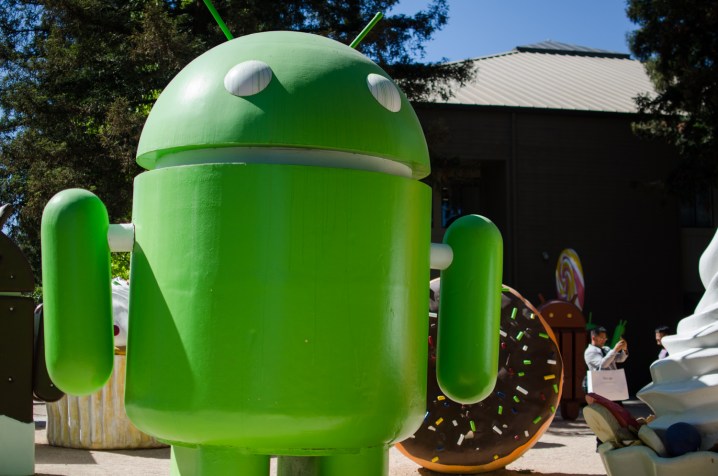
Having a recognizable logo is important for a company’s branding. When you see the golden arches of McDonald’s M, Nike’s swoosh, or the Starbucks siren, you instantly know what they are. No further signage or explanation is required. Sometimes good logos go beyond simple recognition to convey something about the brand behind them, like Amazon’s logo with the arrow that goes from A to Z, signifying the fact it sells everything.
Before the operating system came along, android usually meant a robot with a human appearance or form, so it makes sense that Google’s Android logo is a friendly-looking green robot. But that friendliness and openness also conveys something about the platform, which was conceived as a path towards open standards for smartphone manufacturers and developers.
What is it called?
The Android mascot was never officially named. For a while the name Andy was associated with the logo — potentially referring to Android’s creator Andy Rubin — but we’re not sure where that came from. The Android team called it Bugdroid, and that name is as close as you’ll get to an official moniker.
When Google mentions Bugdroid, it still generally refers to it as the Android mascot.
Bugdroid goes viral
Who created the Android logo?
Blok’s design was simple enough to become iconic, appealing to a much wider audience than the development community it was initially aimed at. She went on to work at Adobe, Apple, and Facebook among others.
After its release, the cute Android mascot began to pop up everywhere with all manner of strange makeovers, including ninjas, pirates, and even cats. One of the smartest artworks depicted the
Bugdroid quickly spread to t-shirts and keychains. The mascot craze even gave rise to plastic and plush collectibles with endless versions. Google eventually launched Androidify, giving you the chance to design your very own version of the Android mascot that looks just like you.
Now more than a decade old, Bugdroid is still going strong and continues to serve as the instantly recognizable face of the Android platform. Every new version has a Bugdroid to match, and Google has a lawn on its Mountain View campus dedicated to previous Android version Bugdroid statues. Google also celebrated 10 years with a special Android Jetpack browser game that challenges you to navigate the mascot through the air collecting sweet treats and avoiding bugs.
We have no idea what Android Q will be called, but we’re sure the Android mascot will be front and center when it’s unveiled.
Editors' Recommendations
- Every Android tablet we’re expecting in 2024
- Samsung’s newest Android tablet is a perfect iPad alternative
- These are the best Android 15 features you need to know about
- Android 15 has two hidden features you’re going to love
- A new Android 15 update just launched. Here’s everything that’s new



